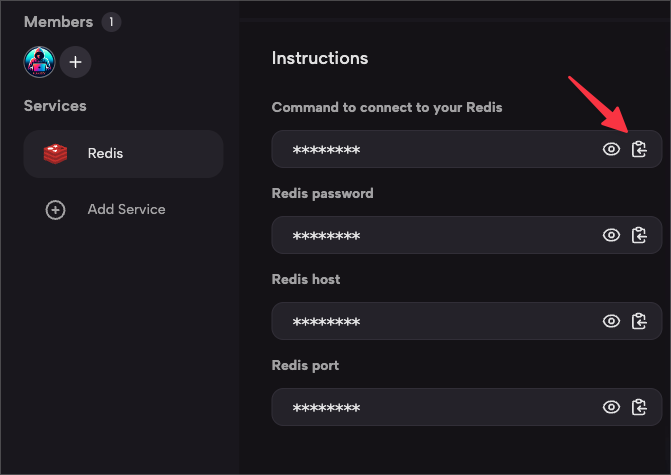Redis
Redis 是一个将数据存储在内存,并可持久化到硬盘的数据库。
Redis 是一个将数据存储在内存,并可持久化到硬盘的数据库。
平台Zeabur
部署次数4308
发布者 Zeabur
Zeabur
 Zeabur
Zeabur平台Zeabur
部署次数4308
发布者 Zeabur
Zeabur
 Zeabur
Zeabur部署次数4308 次
发布者 Zeabur
Zeabur
 Zeabur
Zeabur创建于2024-06-03
模版内的服务
标签
Database
Redis 是什么?
Redis 通常被称为数据结构服务器。这意味着 Redis 通过一组命令提供对可变数据结构的访问,这些命令通过 TCP socket 和简单的协议,以服务器-客户端模式传送。因此不同的程序可以共同查询和修改相同的数据结构。
Redis 实现的数据结构具有以下特点:
- Redis 会将数据存储在硬盘上,即使这些数据始终在服务器内存中被访问和修改。这意味着 Redis 不仅快速,而且具有持久性。
- 数据结构的实现注重内存效率,所以 Redis 内部的数据结构相比使用高级编程语言建模的相同数据结构,会使用更少的内存。
- Redis 提供许多数据库常见的功能,如复制、可调整的持久性级别、集群和高可用性。
环境变量
${REDIS_CONNECTION_STRING}: Redis 服务的连接字符串。${REDIS_HOST}: Redis 服务的主机名称。${REDIS_PORT}: Redis 服务的端口。${REDIS_PASSWORD}: Redis 服务的密码。
当你部署 Redis 服务后,Zeabur 会自动将相关的环境变量注入到其他服务中。
你也可以在控制台的"操作指南"区块中找到连接信息。
连接到数据库
redis-cli
redis-cli 是一个命令行工具,让你能够与 Redis 数据库交互。使用 redis-cli,你可以在命令行终端或交互模式中执行 Redis 命令。
按照文档下载安装后,回到 Zeabur。点击 Redis 服务中的操作指南标签,点击"连接到你的 Redis 的命令"的复制按钮来复制连接地址。

将复制的命令粘贴到终端中,输入 PING 测试是否连接成功:

这时候你就可以开始操作 Redis 了。